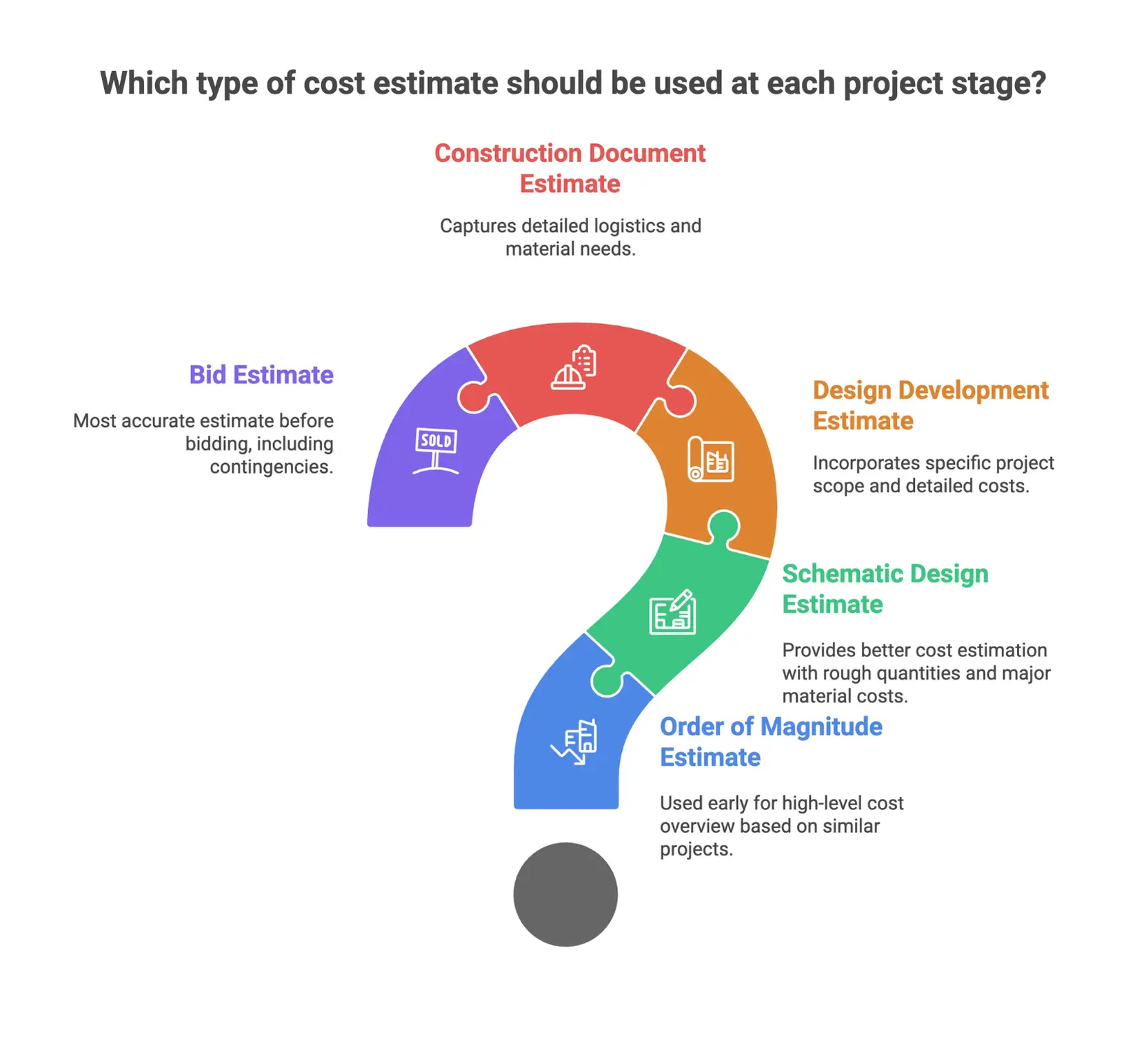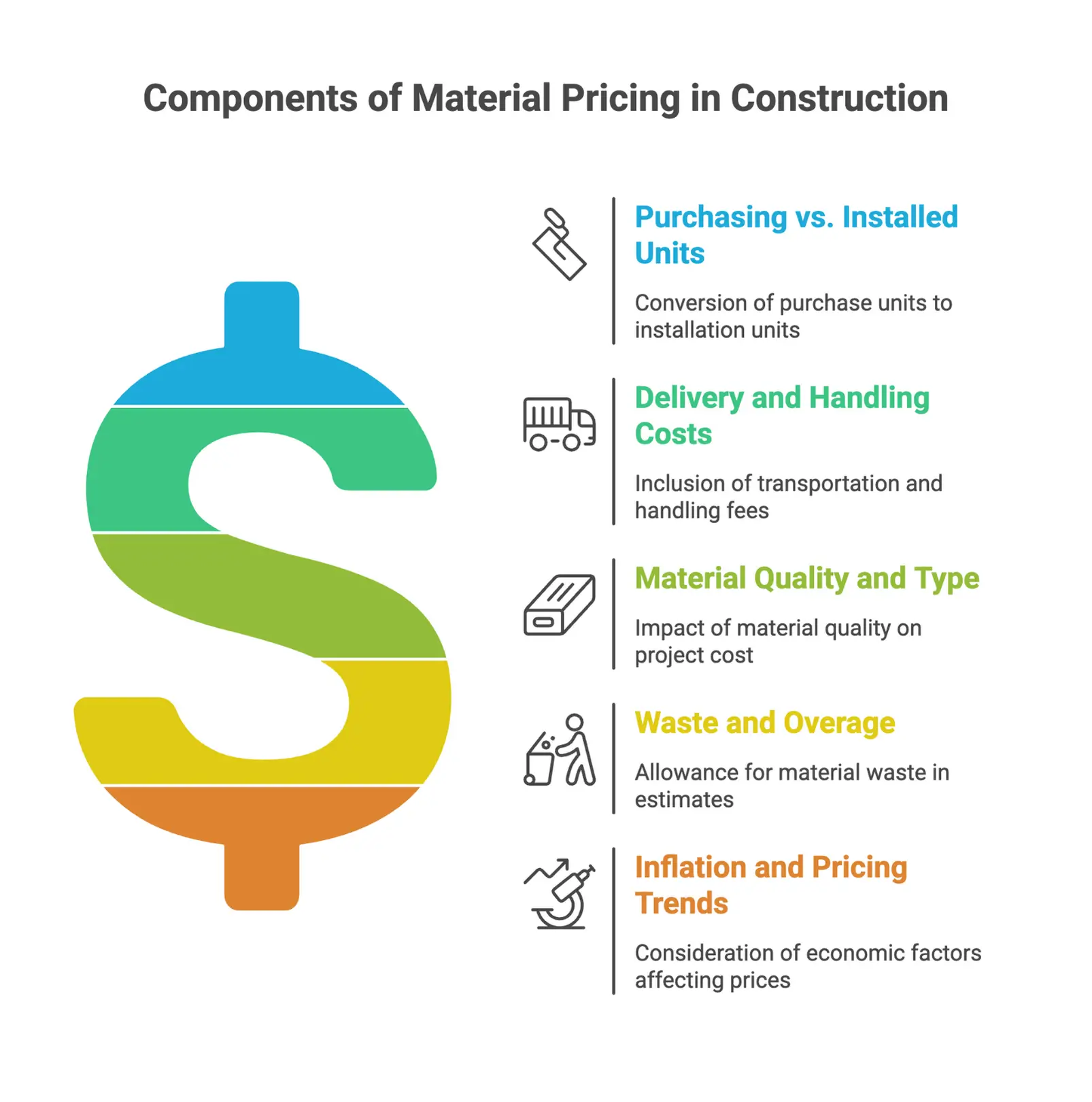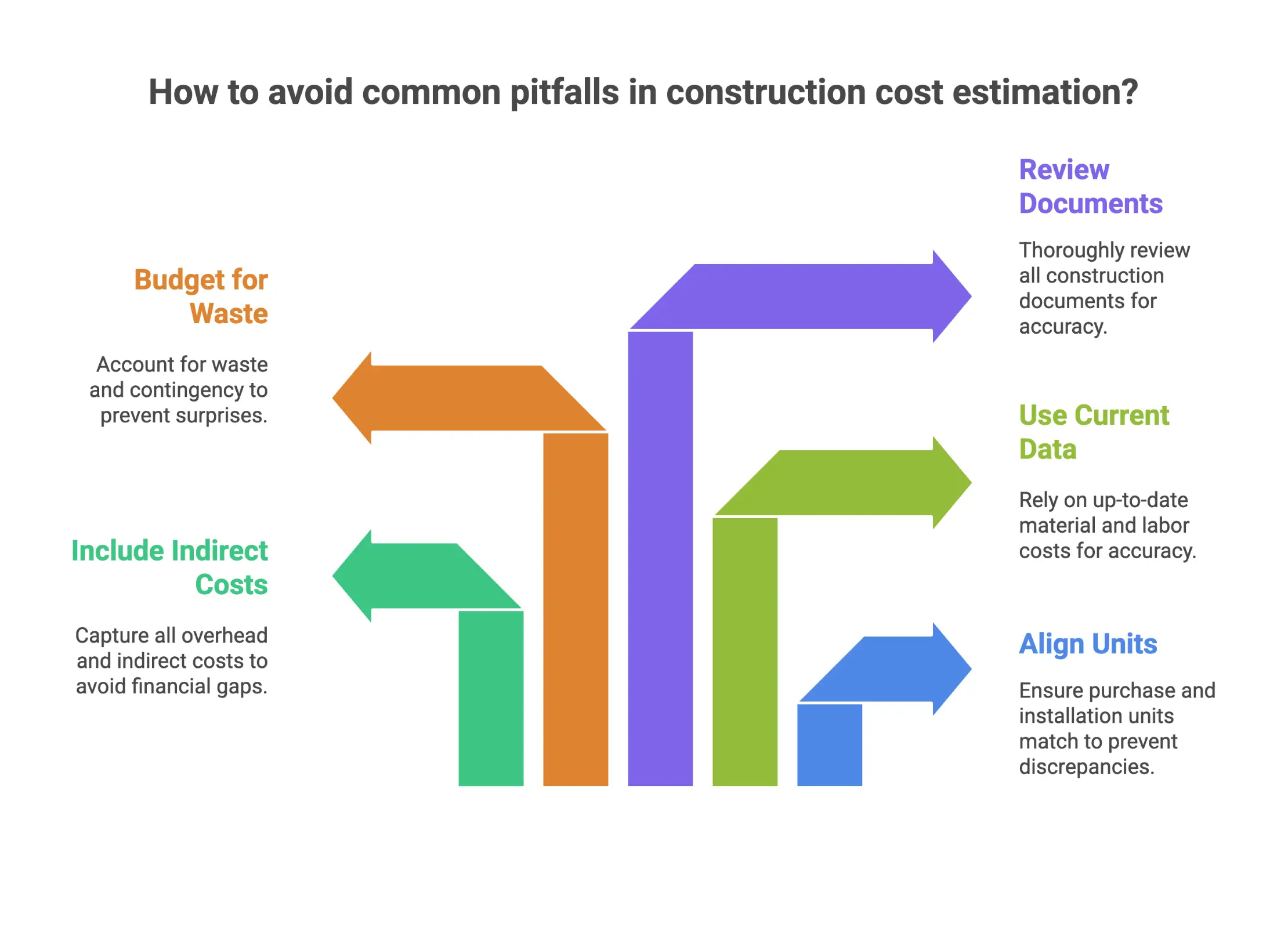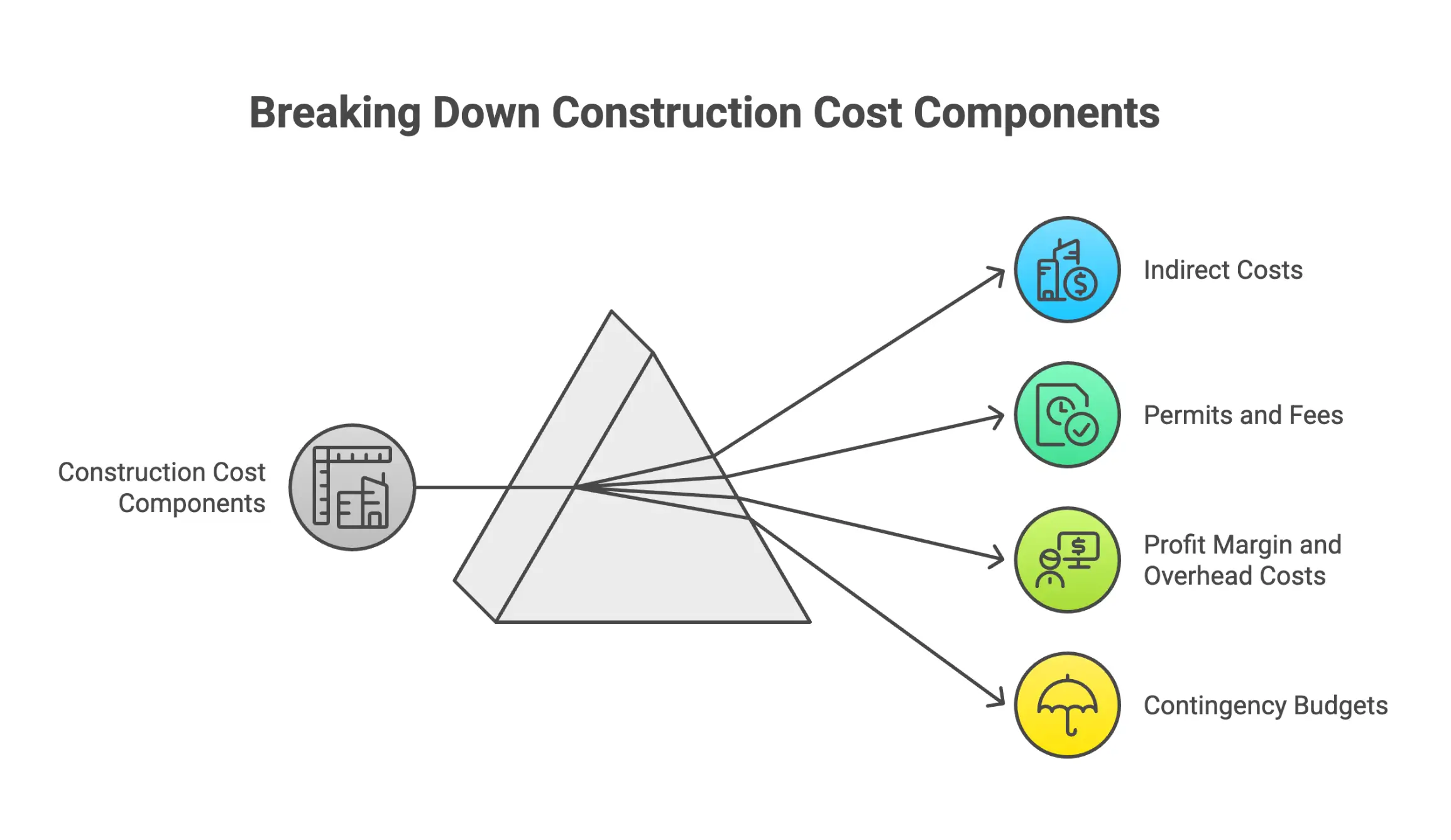

Estimating Material Cost: Strategies for Accurate Construction Budgets
TL;DR: Getting material costs right isn’t just about keeping the books balanced. It’s the backbone of profitable, on-time construction projects. This guide breaks down proven strategies for construction cost estimating, covers material takeoff best practices, highlights construction estimating software advantages, and flags common missteps. Whether you're bidding or looking to improve project costs, sharper construction estimates and fewer overruns start here.
Why Estimating Material Cost Matters in Construction Projects
Construction cost estimating lies at the heart of every successful project. An accurate estimate guides budgets, schedules, and even relationships among clients, subcontractors, and suppliers. When construction material costs or labor costs spiral, so does the risk. Miss a detail in your construction documents, and the fallout can echo across the project lifecycle.
A sound construction cost estimation process helps ensure project feasibility, compliance, and profitability. Most budget overruns or delays are rooted in inaccurate project estimates, often because the complexity of construction projects demands a deep understanding of both direct costs like materials and labor, and indirect costs such as permits or bonding costs.
Aligning Budgets and Stakeholder Expectations
Making reliable construction estimates isn’t just about balancing the books. Construction managers, estimators, and project managers depend on clarity. Project costs must be transparent from the earliest phase. Accurate cost estimates in the construction industry help owners set reasonable expectations, align teams with scope, and minimize disputes by making the logic behind material takeoffs and labor costs clear.
From the first rough estimate through to approved construction documents, aligning expectations means including not just construction materials, but also everything from labor costs to equipment costs and insurance. Capturing all project costs ensures the client receives a realistic budget, and contractors protect their profit margin.
Types of Construction Cost Estimates and When to Use Them
Understanding the main types of construction cost estimates and their role at each stage anchors your entire construction cost estimation strategy:
Order of Magnitude Estimate (Rough Estimate)
- Used early, often before design, to give a high-level construction cost. Includes only broad assumptions about materials needed based on similar past projects.
Schematic Design Estimate
- Applied once schematic drawings are available, providing a better construction cost estimation by including rough quantities and major material costs.
Design Development Estimate
- As designs are detailed, this estimate incorporates specific project scope, construction materials, detailed labor costs, and known indirect costs.
Construction Document Estimate
- Completed when construction documents are ready, this estimate captures detailed job site logistics, all materials needed, quantity takeoff results, and administration costs.
Bid Estimate (Final Estimate)
- The most accurate cost estimate right before bidding, incorporating all direct and indirect costs, contingencies for unforeseen expenses, and the latest pricing trends for materials and subcontractor costs.

Each estimate uses increasing levels of detail. Accurate construction cost estimating relies on historical data from past projects, digital plans, and iterative project management reviews. This ensures that every phase supports the next.
Performing a Material Takeoff: The Key to Cost Accuracy
A material takeoff is the step where cost estimators calculate every material needed for a construction project by reviewing construction documents. Errors in the takeoff process easily lead to budget overruns, so follow these steps:
- Break down project documents into components.
- Measure area, volume, counts, and lengths accurately for each item.
- List each construction material according to its purchase and installation units, accounting for conversion.
- Apply a typical overage of 10-15% to account for waste or mistakes, reflecting industry best practice in construction cost estimating.
- Use a bill of quantities (BOQ) to organize and simplify bid leveling for large construction projects.
Specialty contractors often review specifications to perform a detailed material takeoff, ensuring their materials needed align with both digital plans and field realities.
The process may be manual or leverage digital estimating software. Cloud-based software solutions now automate much of the material takeoff process, scanning digital plans to compile comprehensive lists of construction materials and update project costs in real time.
The Complete Construction Estimating Process
Construction cost estimating is a complex process that integrates materials, labor costs, equipment costs, and indirect costs. Here’s how a robust estimating process unfolds:
- Site Visit and Scope Review
Visit the job site and review drawings to grasp the project scope. Note any unique project requirements or risk factors. - Material Takeoff
Measure and list every construction material required, referencing construction documents and digital plans. - Labor and Equipment Costs
Break out crew roles, estimate how many hours each role will need, and assign labor costs. Include necessary equipment costs and fuel. - Estimating Indirect Costs
Capture indirect costs like permits, bonding costs, insurance, temporary facilities, and administration costs. - Apply Waste, Contingencies, and Profit Margin
Add a realistic waste percentage. Insert a contingency budget. This is typically 5–20% of the total cost for unforeseen expenses. Determine your profit margin to ensure financial viability. - Gather Quotes and Compare Suppliers
Shop around for supplier quotes. Consider delivery costs, bulk pricing, and the potential for discounts. Good supplier relationships typically yield better deals and more accurate pricing. - Review and Adjust
Create estimates using historical data, comparing costs against similar past projects. Incorporate feedback from all stakeholders, including general contractors and construction managers.

Key Estimating Methods for Construction Cost Estimation
Choosing the right method for your construction estimates depends on the project stage, level of detail, and information available:
Unit Pricing Method
A staple in construction cost estimation, this method multiplies quantities from the material takeoff by standard unit prices. It's transparent and great for revisions, often used alongside construction estimating software.
Parametric Estimating
Applies statistical models to cost data from similar construction projects. This results in tailored cost estimates based on variables like square footage or volume, useful for conceptual or schematic design phases.
Assembly Estimating
Bundles related construction materials and tasks, such as wall systems, for efficient mid-phase estimates. Assembly estimating bridges the gap between rough and detailed construction cost estimating.
Bottom-Up Estimating
The most detailed approach. Add up costs for every line item including construction materials, labor costs, and associated indirect costs. Used for final bid or construction document estimates.
Square Foot Method
Multiply a cost per square foot by project size. Quickly provides a rough estimate during early talks or project scoping. Less accurate for unique or complex projects, but helpful in the conceptual phase.
Comprehensive Guide to Material Pricing Components in Construction Projects
True construction cost estimating means considering more than just the sticker price for materials:
- Purchasing Units vs. Installed Units
Materials are purchased in one unit, installed in another. For example, tile bought by the box, installed by square foot. Get conversions right to avoid costly waste or project delays. - Delivery and Handling Costs
Include delivery fees and transport in your total cost. - Material Quality and Type
Quality and class of construction materials affect durability and the total project cost. Don't overlook this. Trade-offs here can lead to future expenses. - Waste and Overage
Apply a typical waste factor of 10–15% to your estimates. If actual field data supports different numbers, use them. - Inflation and Pricing Trends
Account for inflation and current pricing trends in materials needed, especially for long-term projects.

Construction Estimating Software: Streamlining the Cost Estimating Process
Construction estimating software has transformed the industry, allowing estimators to:
- Automate material takeoffs using digital plans and machine learning.
- Integrate labor costs, construction materials, and equipment costs in one place.
- Update cost estimates instantaneously as project details change.
- Reduce errors, minimize manual recalculation, and improve overall project management.
Popular software solutions offer cloud-based platforms for easy project access, even from the job site. These platforms can sync with accounting systems, manage construction documents, and streamline internal communication, boosting efficiency throughout the estimation process.
Best Practices for Improving Material Cost Estimates
Employ these proven strategies to develop more accurate and reliable cost estimates in construction projects:
1. Leverage Digital Tools and Historical Data
Centralize project data to ensure consistency, and use digital estimating tools that pull from both current inventories and past projects. Automated material takeoff and cost reporting speed up the construction estimating process and reduce manual error.
2. Ensure Clear Construction Documents
Thorough, unambiguous construction documents and specifications are essential for accurate cost estimates. Use clear templates for material lists, spell out every item and quantity, and keep terminology consistent.
3. Foster Supplier Relationships
Strong communication and long-term relationships with suppliers help minimize unexpected cost increases and ensure accurate, up-to-date material prices. Always compare quotes from multiple suppliers.
4. Account for All Project Costs
Include every relevant cost category: direct costs (materials, labor, equipment), indirect costs (permits, insurance, admin), overhead costs, bonding costs, and contingencies. Accurate construction estimates should leave no hidden fees or price gaps.
5. Collaborate with the Project Team
Cost estimators should work closely with architects, engineers, general contractors, and other key stakeholders. Cross-functional collaboration ensures material lists, quantities, and project scope are clearly defined and checked at every phase.
6. Update and Review Estimates Frequently
Construction projects are dynamic. Material costs move, and so do project requirements. Continually update cost estimates as designs, suppliers, or schedules shift.
Construction Cost Estimating in Practice: Case Example
Consider a commercial construction project. The estimator uses construction estimating software to import digital plans and performs a material takeoff. He includes:
- Materials Needed: All construction materials, measured with correct units and overages for waste.
- Labor Costs: Specific hours for each crew and detailed roles.
- Equipment Costs: Machine rentals, fuel usage, and operator time.
- Indirect Costs: Permits, temporary facilities, administrative salaries.
- Contingency and Profit Margin: 15% combined.
- Delivery Costs: Freight and handling for material shipments.
- Bonding Costs and Insurance: All required policy costs included.
After supplier quotes and internal team reviews, the estimator finalizes the construction cost estimate. The bid is competitive, the client has a clear budget, and the contractor protects their profit margin.
Avoiding Common Pitfalls in Construction Cost Estimation
A robust cost estimator always watches for these risks:
- Mismatched Units of Measure: Double-check that your purchase units align with installation units in the construction process.
- Missed Indirect and Overhead Costs: Capture every project cost, including site visits, administration, and bonding costs, to avoid last-minute gaps.
- Overreliance on Outdated Data: Use only current material prices and labor costs, and always benchmark against recent projects.
- Ignoring Waste and Contingency: Failing to budget for these leads to financial surprises midway through construction.
- Failure to Review Construction Documents: Inaccurate estimates often stem from missed details, unclear drawings, or missed addenda in project documents.

Cost Estimating for DIY and Small-Scale Projects
Material cost estimating is critical in DIY or smaller construction projects too. In addition to standard cost estimations:
- Consider hidden costs such as tool rentals, taxes, disposal fees, and permit charges.
- Always include delivery and transport, no matter the project size.
- Shop for bulk discounts and compare multiple supplier quotes.
- Perform a manual or digital material takeoff to avoid costly surprises.
Factors That Influence Total Construction Costs
Total cost in construction always reflects a web of factors:
- Material Quality and Type: Impacts longevity and maintenance. Budget for appropriate quality.
- Quantity Takeoff Accuracy: Precise measuring leads to better procurement and lower waste.
- Labor Efficiency and Productivity: Crew skills, project manager oversight, and equipment choice affect timelines and overall costs.
- Insurance and Bonding: Always factor in general liability insurance and bonding costs for risk protection.
- Supplier Terms and Delivery Fees: Delivery costs, rush charges, and supplier minimums often swing total project cost.
- Market Trends: Price fluctuations and inflation should be built into the estimate for future projects.
Indirect and Additional Costs to Consider
Professional construction estimators always assess these additional costs:
- Indirect Costs: Administrative salaries, office setup, safety plans, legal fees.
- Permits and Fees: Required for compliance on almost all construction sites.
- Profit Margin and Overhead Costs: These are not "extra" but every construction business must account for them.
- Contingency Budgets: Accounts for unforeseen expenses, usually 5–20% of project costs.

Digital Transformation in Construction Estimating
Modern construction estimating software offers:
- Automated takeoffs
- Live integration with accounting and construction management software
- Error reduction in calculation and tabulation
- Collaboration features for sharing estimates with all stakeholders
- Cloud-based mobile access for job site reviews and instant updates
Reliable construction estimates now require less manual spreadsheet labor, letting teams focus on decision-making and project delivery, not just crunching numbers.
Integrating Cost Estimator Roles in Your Team
A trained cost estimator’s job extends beyond number-crunching. They must:
- Collaborate with architects, engineers, project managers, and specialty subcontractors to clarify scope.
- Pull historical data from past projects to inform current cost estimating process decisions.
- Align with general contractors to ensure quantities, labor calculations, and construction materials line up with real job site requirements.
- Continue refining estimates as project details shift to guarantee on-budget delivery.
FAQs: Answering the Biggest Questions in Construction Cost Estimating
How does construction cost estimating improve project feasibility?
By capturing all materials, labor, and indirect costs early, construction cost estimation helps project managers determine whether a project is viable within available resources. Comprehensive estimates prevent surprises and budget overruns.
What is included in a construction cost estimate?
A typical estimate covers all direct costs (construction materials, labor costs, equipment), indirect costs (administration, permits, bonding costs), and overhead costs, plus contingency. Including delivery, insurance, and waste ensures all bases are covered.
How can construction estimating software reduce errors?
It automates calculations, material takeoff, and cost tabulation from digital plans and construction documents. Integrations with accounting and project management software streamline both the estimation process and running cost controls.
How do you account for indirect costs in construction estimates?
List all non-labor, non-material expenses tied to the project: permits, temporary facilities, admin salaries, legal fees, and insurance. Add overhead as a percentage and ensure each category is itemized for review.
When should you perform a thorough material takeoff?
Always before finalizing the construction estimate or submitting bids. Begin with construction documents, perform a site visit if practical, and leverage digital or manual takeoff tools for maximum accuracy.
What contingency budget percentage is recommended?
Industry best practice is to include a contingency of 5–20% of the total cost, depending on project complexity and risk profile.
Conclusion: Building a Better Construction Cost Estimating Process
Accurate material cost estimating isn’t a side task. It sits at the core of healthy construction business operations, from preliminary project estimates to closing out contracts. Whether you’re running a growing construction company, handling bid estimates, or modernizing your workflows with construction estimating software, attention to detail in every phase of the estimation process makes the difference between a project that delivers or one that disappoints.
Ready to Take the Next Step?
If you want to modernize your approach to construction cost estimating, explore Nomitech’s full suite or connect with our team for advice on bringing leading construction management software and best-in-class estimating tools into your construction business.
By mastering the construction estimating process, leveraging modern software solutions, and collaborating with your entire project team, you can create accurate cost estimates that improve your bottom line, win more competitive bids, and build trust with every client.




